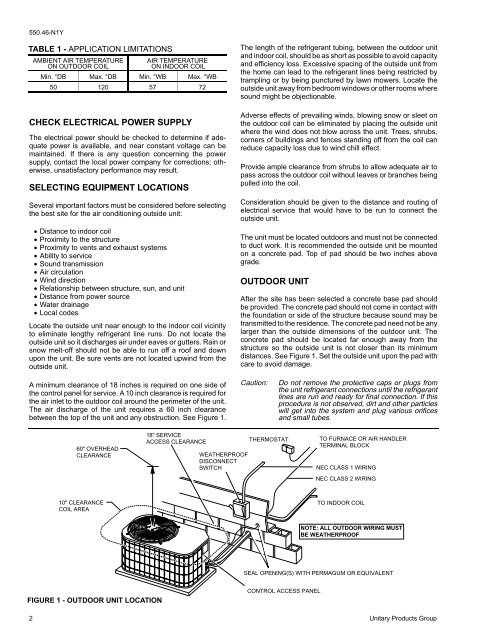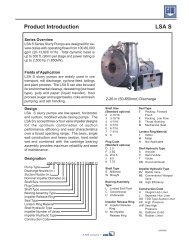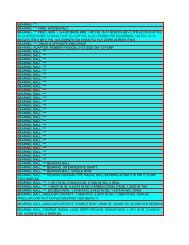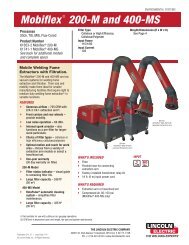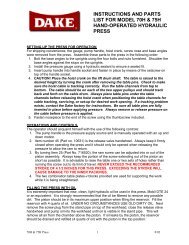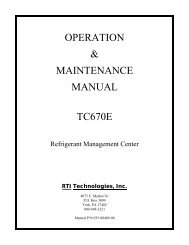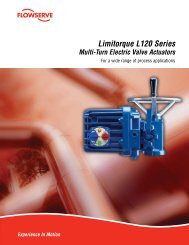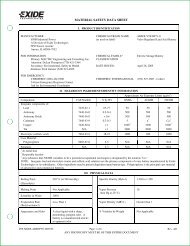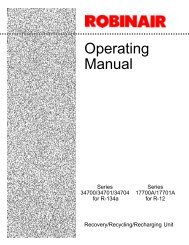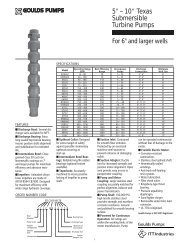Attachment 2 - American Electric Power
Attachment 2 - American Electric Power
Attachment 2 - American Electric Power
You also want an ePaper? Increase the reach of your titles
YUMPU automatically turns print PDFs into web optimized ePapers that Google loves.
550.46-N1YTABLE 1 - APPLICATION LIMITATIONSAMBIENT AIR TEMPERATUREON OUTDOOR COILAIR TEMPERATUREON INDOOR COILMin. °DB Max. °DB Min. °WB Max. °WB50 120 57 72CHECK ELECTRICAL POWER SUPPLYThe electrical power should be checked to determine if adequatepower is available, and near constant voltage can bemaintained. If there is any question concerning the powersupply, contact the local power company for corrections; otherwise,unsatisfactory performance may result.SELECTING EQUIPMENT LOCATIONSSeveral important factors must be considered before selectingthe best site for the air conditioning outside unit:• Distance to indoor coil• Proximity to the structure• Proximity to vents and exhaust systems• Ability to service• Sound transmission• Air circulation• Wind direction• Relationship between structure, sun, and unit• Distance from power source• Water drainage• Local codesLocate the outside unit near enough to the indoor coil vicinityto eliminate lengthy refrigerant line runs. Do not locate theoutside unit so it discharges air under eaves or gutters. Rain orsnow melt-off should not be able to run off a roof and downupon the unit. Be sure vents are not located upwind from theoutside unit.The length of the refrigerant tubing, between the outdoor unitand indoor coil, should be as short as possible to avoid capacityand efficiency loss. Excessive spacing of the outside unit fromthe home can lead to the refrigerant lines being restricted bytrampling or by being punctured by lawn mowers. Locate theoutside unit away from bedroom windows or other rooms wheresound might be objectionable.Adverse effects of prevailing winds, blowing snow or sleet onthe outdoor coil can be eliminated by placing the outside unitwhere the wind does not blow across the unit. Trees, shrubs,corners of buildings and fences standing off from the coil canreduce capacity loss due to wind chill effect.Provide ample clearance from shrubs to allow adequate air topass across the outdoor coil without leaves or branches beingpulled into the coil.Consideration should be given to the distance and routing ofelectrical service that would have to be run to connect theoutside unit.The unit must be located outdoors and must not be connectedto duct work. It is recommended the outside unit be mountedon a concrete pad. Top of pad should be two inches abovegrade.OUTDOOR UNITAfter the site has been selected a concrete base pad shouldbe provided. The concrete pad should not come in contact withthe foundation or side of the structure because sound may betransmitted to the residence. The concrete pad need not be anylarger than the outside dimensions of the outdoor unit. Theconcrete pad should be located far enough away from thestructure so the outside unit is not closer than its minimumdistances. See Figure 1. Set the outside unit upon the pad withcare to avoid damage.A minimum clearance of 18 inches is required on one side ofthe control panel for service. A 10 inch clearance is required forthe air inlet to the outdoor coil around the perimeter of the unit.The air discharge of the unit requires a 60 inch clearancebetween the top of the unit and any obstruction. See Figure 1.Caution:Do not remove the protective caps or plugs fromthe unit refrigerant connections until the refrigerantlines are run and ready for final connection. If thisprocedure is not observed, dirt and other particleswill get into the system and plug various orificesand small tubes.60" OVERHEADCLEARANCE18" SERVICEACCESS CLEARANCEWEATHERPROOFDISCONNECTSWITCHTHERMOSTATTO FURNACE OR AIR HANDLERTERMINAL BLOCKNEC CLASS 1 WIRINGNEC CLASS 2 WIRING10" CLEARANCECOIL AREATO INDOOR COILNOTE: ALL OUTDOOR WIRING MUSTBE WEATHERPROOFSEAL OPENING(S) WITH PERMAGUM OR EQUIVALENTFIGURE 1 - OUTDOOR UNIT LOCATIONCONTROL ACCESS PANEL2 Unitary Products Group


